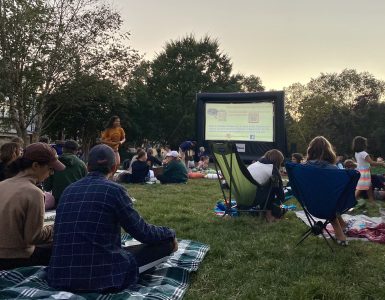Bloomingdale, a historic District neighborhood, has a racially-charged story.
Community leaders Bertha Holliday and Paul Cerruti of the Bloomingdale Civic Association created an architectural and social timeline to show how race-based housing discrimination has steered the social fabric of the neighborhood.
“A lot of the past problems of the neighborhood were not really created by the neighborhood, but by federal and district policies,” Holliday said.
The timeline tracks Bloomingdale’s transformation from a white, upper-middle class to a majority black neighborhood, and then to today’s gentrification challenges.
A yoga studio and wine bar have pushed out older local businesses, said Gabriel Schneider, an on-and-off Bloomingdale resident since 2010.
“Now the neighborhood is even more upscale…even I feel sort of like I don’t belong in the neighborhood anymore,” Schneider, a white resident, said.
“A lot of people with a lot of money moving in here,” Schneider continued.
Restrictive racial housing covenants barred black people from moving into the neighborhood from the 1890s to the 1940s. Eventually, in 1948, the covenants were struck down by the Supreme Court, according to the timeline. Holliday said Bloomingdale residents played a “heroic” role in taking down the laws.
“We were engaged in all kinds of lawsuits, engaged in all kinds of protests,” Holliday said. “That is why we could document this so well in the timeline, in terms of resistance that the residents of Bloomingdale have continually offered on behalf of a better community.”
There are many stages of gentrification, and Bloomingdale is in the third stage — redevelopment —according to Holliday. Long-time black residents feel they have “ceded” the neighborhood’s public spaces to young, white newcomers, she said.
Maggie Downing, a white Georgetown graduate, moved to Bloomingdale in September 2017.
“I just know people who live in my building,” Downing said about neighborhood residents.
“I know a bit about the neighborhood’s history, but not, you know, super in-depth,” she said.
Holliday leads the charge for the Bloomingdale Village Square Project, which seeks to nurture civic engagement and provide culturally accessible public spaces for all residents.
“The history demonstrated how so many of the housing restrictions that formally existed in Bloomingdale were intentional,” Holliday said.
“So the idea is that if people can intentionally attempt to create a segregated neighborhood, we could intentionally seek to create a stable, multiracial, multiracial neighborhood.”














Add comment